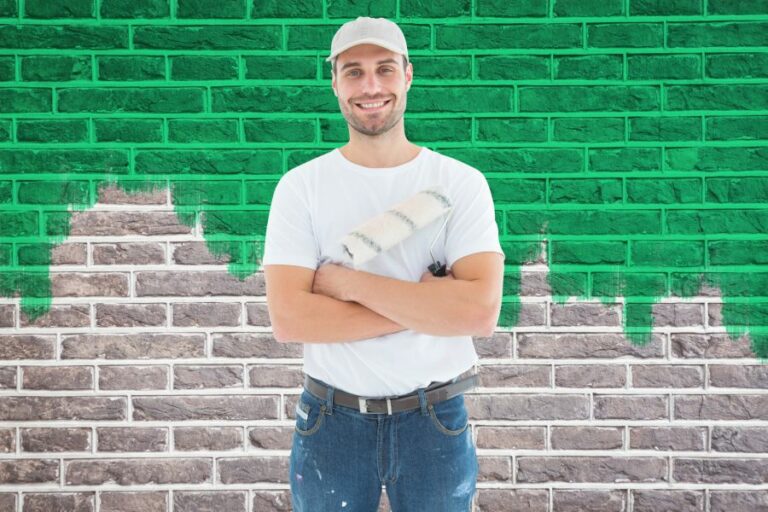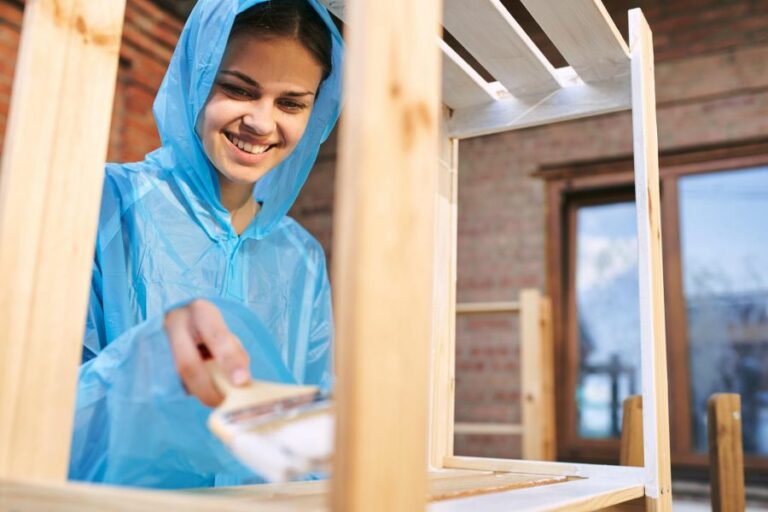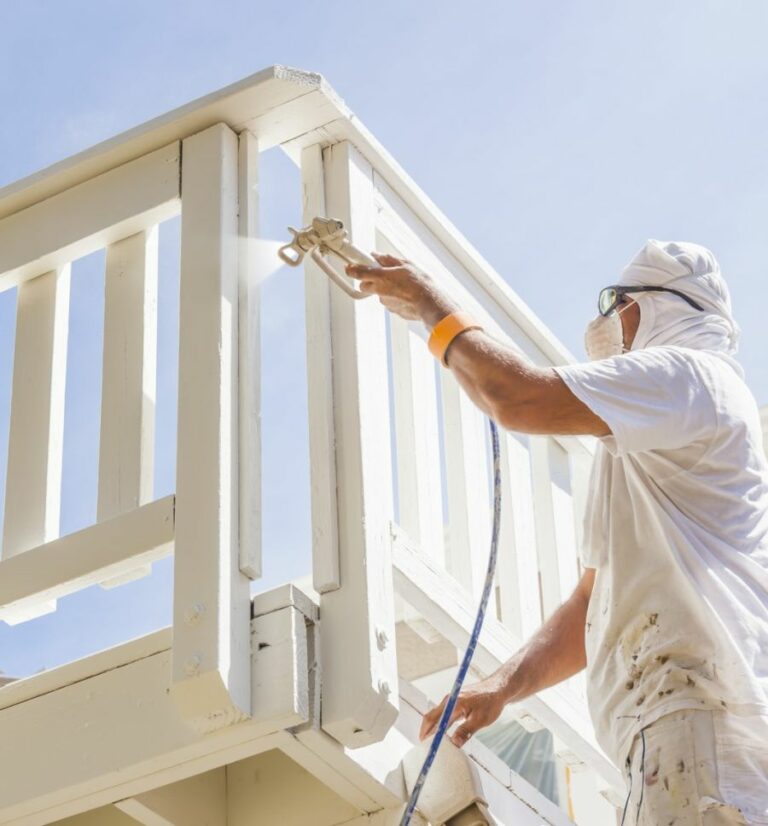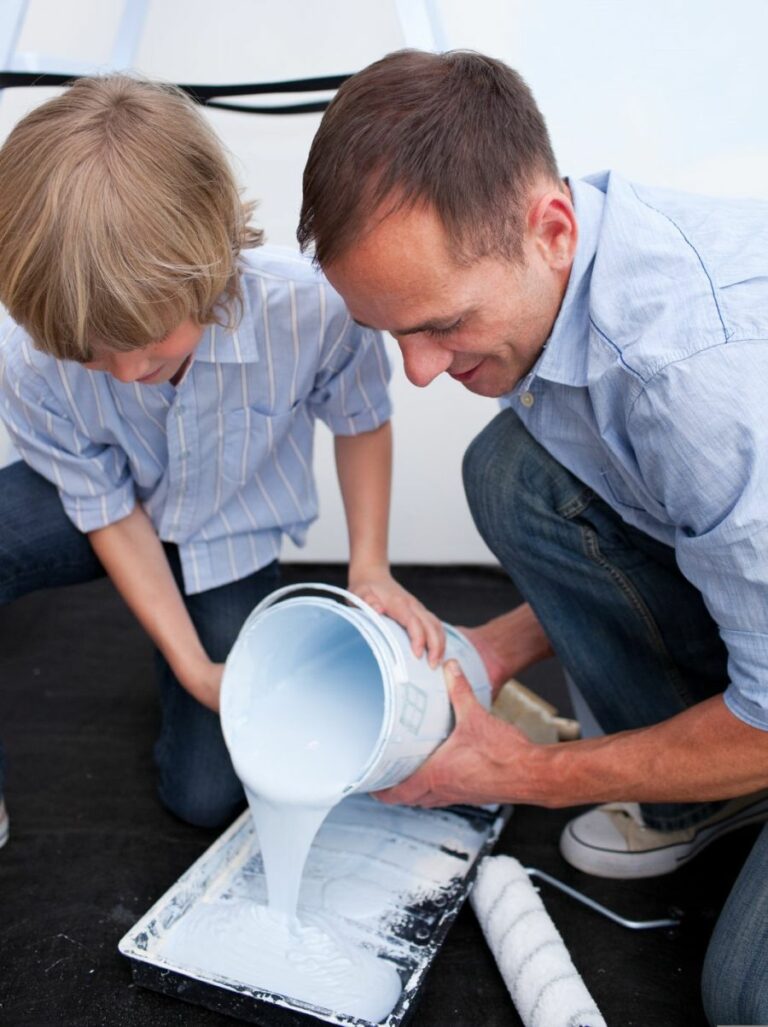Outdoor Art Paint
Imagine a world where nature is your canvas and endless hues of colors come together to produce breathtaking masterpieces. Welcome to the realm of outdoor art paint! Whether you’re an experienced artist or looking to unleash your inner talent, this comprehensive guide provides invaluable insights to help you harness the beauty of nature and transform it into art.
Outdoor art paint:
Creating beautiful outdoor artwork requires choosing the right paint to withstand the elements. Acrylic paint is versatile and quick-drying, while oil paint offers rich colors and slow drying time. Mural and exterior paints offer superior durability and weather resistance. Consider surface material, weather conditions, budget, and painting style when selecting paint for your outdoor project. Use proper safety precautions, prepare surfaces effectively, and maintain your artwork with regular cleaning, inspections, and reapplication of UV-resistant varnish to keep your creations looking their best.

Discover the magic of outdoor art paint as we dive into its plethora of possibilities. Unleash your creativity while embracing nature, exploring various techniques, and learning essential tips for a successful, vibrant masterpiece. Transform landscapes with your colorful brushstrokes. Let’s begin!
Contents
- 1 Exterior Artwork Painting
- 2 What is the Most Suitable Type of Paint for Outdoor Artwork?
- 3 Is Acrylic Paint Suitable for Outdoor Use?
- 4 Which Type of Paint Should Be Utilized for an Outdoor Mural?
- 5 Which is more suitable for outdoor use: latex or acrylic paint?
Exterior Artwork Painting
Creating beautiful outdoor artwork is an enjoyable way to spend time in nature and express your creativity. Whether you’re a beginner or an experienced artist, using the right outdoor art paint is essential to ensure your masterpiece can withstand the elements and last for years to come.
• Understanding the Types of Outdoor Art Paint
– Acrylic Paint
Acrylic paint is a versatile and popular option for outdoor art due to its durability, quick-drying properties, and ability to adhere to various surfaces. Acrylic paint is water-based, making it easy to clean up after your painting session.
Pros:
- Dries quickly, limiting the impact of weather and dust accumulation.
- Adheres well to various surfaces, including wood, stone, and metal.
- Water-resistant when dry, ideal for outdoor use.
- Easy to clean up with soap and water.
Cons:
- Can be less resistant to fading and yellowing over time compared to other outdoor art paints.
– Oil Paint
Oil paint is a traditional medium that has been used for centuries. Known for its rich colors and slow drying time, oil paint creates a beautiful, glossy finish that is suitable for outdoor use with proper sealing and maintenance.
Pros:
- Rich, vibrant colors that remain true over time.
- Blends well, allowing for smooth gradients and transitions.
- Can be applied in thick, impasto layers for added texture and depth.
Cons :
- Slow drying time, often taking several days or even weeks to fully dry.
- Requires the use of solvents, such as turpentine, for thinning and cleaning.
- May be less durable and less resistant to moisture than other outdoor art paints.
– Mural and Exterior Paint
Mural and exterior paints are specifically designed for outdoor use, providing superior durability and weather resistance compared to other art paints. They are typically available in a wide range of colors and finishes, making them an ideal choice for creating long-lasting outdoor murals and artwork.
Pros:
- Formulated to withstand harsh outdoor conditions, including UV rays and weather exposure.
- Highly resistant to fading, chipping, and peeling.
- Adheres well to various surfaces, including brick, concrete, and stucco.
Cons:
- Can be more expensive than other types of outdoor art paint.
- Limited range of colors and finish options compared to acrylic and oil paints.
- May be difficult to find in some art supply stores.
• Choosing the Right Paint for Your Outdoor Art Project
When selecting the best outdoor art paint for your project, consider the following factors:
- Location and Surface Material: The surface you will be painting on, such as brick, concrete, or wood, may affect the type of paint you choose. Acrylic and mural paints are known for their excellent adherence to various surfaces, while oil paints may require additional preparation or primers.
- Weather and Environmental Conditions: Assess the typical weather conditions in the area where your artwork will be displayed. If your painting is exposed to harsh sunlight, rain, or humidity, choose a paint specifically formulated for outdoor use.
- Budget: The cost of outdoor art paint varies significantly based on type and quality. Determine your budget and choose a paint that meets both your needs and your price range.
- Painting Style and Technique: Consider your preferred painting style and techniques when selecting paint for your outdoor art. If you enjoy creating detailed, intricate work, oil paints may be the most suitable. For bold, colorful designs, acrylic and mural paints may be preferable.
• Tips for Working with Outdoor Art Paint
- Properly prepare the surface by cleaning it thoroughly and applying a suitable primer if necessary. This will ensure better adhesion and longevity of your outdoor painting.
- Consider using a UV-resistant varnish or sealer to protect your artwork from fading, yellowing, or other damage caused by sun exposure.
- Be aware of the weather conditions when you’re planning your painting session. Aim to work in mild, dry weather to ensure proper drying and to prevent issues caused by rain, humidity, or extreme temperatures.
- Use proper safety precautions when working with outdoor art paint, such as wearing gloves, eye protection, and a mask when handling solvents or thinners.
• Maintaining Your Outdoor Artwork
Regular maintenance will help your outdoor paintings and murals last longer and maintain their original beauty. Follow these tips to keep your artwork looking its best:
- Clean your artwork gently using a soft brush or cloth to remove dirt, dust, and debris. Avoid using harsh chemicals or pressure washers, as they can damage the paint or surface.
- Inspect your artwork regularly for signs of damage or fading. Touch up areas with chipped, cracked, or peeling paint as needed.
- Reapply a UV-resistant varnish or sealer every few years to help protect your artwork from sun damage and prolong its lifespan.
In conclusion, outdoor art paint allows artists to create stunning, durable artwork that can withstand the elements.
By understanding the various types of outdoor paint available, selecting the right paint for your project, and following best practices for painting and maintenance, you can create masterpieces that will be enjoyed outdoors for years to come.
What is the Most Suitable Type of Paint for Outdoor Artwork?
Outdoor art is a beautiful and creative way to add personality and character to any exterior space. Whether it be a mural on a building, a colorful fence, or a decorative garden sculpture, the right paint can truly make a piece come to life.
• A Look at Different Types of Outdoor Paint
– Acrylic Paint
Acrylic paints are water-based, fast-drying, and very versatile. They can be used on a variety of surfaces, including wood, metal, and concrete. Acrylic paint is one of the most popular choices for outdoor art projects due to its durability and resistance to harsh weather conditions.
Pros:
- Quick-drying
- Water-resistant
- Non-toxic
- Adaptable to a variety of surfaces
- Available in various colors and finishes
Cons:
- May require multiple coats for even coverage
- Color may fade over time
– Enamel Paint
Enamel paints are oil-based and known for their high-gloss finish and durability. They are often used for outdoor projects that require a long-lasting, protective coating, such as metal sculptures or signs.
Pros:
- Durable and long-lasting
- High-gloss finish
- Resistant to chipping and peeling
- Available in various colors
Cons:
- Longer drying time
- Solvent-based enamel paints may release harmful fumes
– Latex Paint
Latex paints are another water-based option and are popular for outdoor art projects on wood or masonry. They are easy to work with and provide decent durability.
Pros:
- Easy to apply
- Fast-drying
- Resistant to mildew and weathering
- Can be used on wood, masonry, and other surfaces
Cons:
- Requires a primer for optimal adhesion
- May not be as durable as acrylic or enamel options
• Factors to Consider When Choosing Outdoor Paint
– Surface Material
It’s essential to consider the specific material you will be painting on when choosing the best paint for your outdoor art project. Experimentation may also be necessary to find the perfect paint and surface combination.
For instance, acrylic, latex, or multi-surface outdoor craft paint may work well on wood, while enamel and latex paint may be more appropriate for metal surfaces.
– Weather Conditions
Take into account the local weather conditions in your area when selecting the perfect paint for outdoor art. For example, it’s essential to choose a paint resistant to moisture, mildew, and UV damage if your art will be exposed to high humidity, rain, or intense sunlight.
– Color and Finish
The color and finish of your chosen paint are important factors in achieving the desired look for your outdoor art project. Acrylic, enamel, and latex paints offer a wide range of colors and finishes, from matte and satin to high-gloss.
To maintain the vibrancy and longevity of your colors, consider using a UV-resistant varnish or sealant.
• Expert Tips for Painting Outdoor Art
– Proper Surface Preparation
Before you begin painting your outdoor art, it’s crucial to prepare the surface to ensure adhesion and longevity properly. This may involve cleaning, sanding, and applying a primer or initial coat. Consider using a wood sealer to protect the wood from moisture damage for wood surfaces.
– Layering Techniques
To achieve the best results and full coverage, apply multiple thin layers of paint, allowing each to dry before adding the next. This technique also helps to create a more durable finish and minimize the risk of chipping or peeling.
– Weather Considerations
Always consider the weather conditions when planning your outdoor painting project. It’s best to paint on a warm, dry day with low humidity and minimal wind. Avoid painting on rainy or excessively hot days, as this may negatively affect the paint’s adhesion and drying time.
– Protecting Your Art
Once your outdoor art project is complete, you may want to consider applying a protective coating to help preserve your masterpiece. A clear UV-resistant varnish or polyurethane sealant can protect your art from fading, weather damage, and general wear and tear.
In conclusion, acrylic, enamel, and latex paint all offer various benefits for outdoor art projects. By considering factors such as surface material, weather conditions, and desired color and finish, you can select the best paint for your specific project.
Additionally, don’t forget to follow expert tips and techniques for achieving a high-quality, long-lasting result. With the right paint and proper preparation, your outdoor art will remain vibrant and beautiful for years to come.
Type of Paint | Reason | Example Brands |
|---|---|---|
Acrylic | Weather-resistant, dries quickly, easy to clean up with water, and adheres well to most surfaces | Liquitex, Golden, Utrecht |
Oil | Stands up well to harsh outdoor conditions, easy to blend, slower drying time, and can be layered with other types of paint | Winsor & Newton, Gamblin, Old Holland |
Spray paint | Great for large scale work, dries quickly, and can be used on a variety of surfaces, including metal and wood | Montana, Liquitex, Krylon |
Mural paint | Long-lasting, UV-resistant, and specifically designed for outdoor applications | Nova Color, Chroma Mural Paint, KEIM |
Exterior house paint | Durable and built for long-term weather resistance, widely available in a variety of colors | Behr, Valspar, Sherwin-Williams |
Is Acrylic Paint Suitable for Outdoor Use?
When it comes to choosing the right type of paint for an outdoor project, many people wonder if acrylic paint is the right choice. Acrylic paint is widely known for its versatility, quick drying time, and ease of use. But how does it hold up when used for outdoor purposes?
• Characteristics of Acrylic Paint
Before diving into the suitability of acrylic paint for outdoor use, let’s first understand some of its essential characteristics.
– Water-Based and Fast Drying
Acrylic paint is a water-based medium, making it easy to clean up with water and soap. Its fast drying time is also an advantage for artists and DIY enthusiasts who want to complete their projects quickly.
– Versatility
One of the most significant selling points of acrylic paint is its versatility. It can be applied to various surfaces, including canvas, wood, fabric, and metal. The paint can also be mixed with different mediums to achieve various textures and finishes.
– UV-Resistant and Durable
Acrylic paints are generally UV-resistant, which means they resist fading when sunlight exposes them. This quality is essential when considering paint for outdoor use. Additionally, acrylic paint is known for its durability and ability to withstand the elements.
• Outdoor Use of Acrylic Paint
Now that we understand some of the basic characteristics of acrylic paint let’s discuss its suitability for outdoor use.
– Durability and Protection
Acrylic paint is well-suited for outdoor applications due to its UV resistance and durability. However, it is essential to remember that the lifespan and durability of the paint will depend on the quality of the paint you choose.
Investing in high-quality acrylic paint will ensure that your outdoor project stays vibrant and intact for a more extended period.
I recommend selecting a paint that is specifically formulated for outdoor use, as these products typically provide increased protection against harsh weather conditions, mold, and mildew.
– Suitable Surfaces
As mentioned earlier, acrylic paint can adhere to various surfaces, making it an appropriate choice for a wide range of outdoor projects. Some of the most common outdoor surfaces that work well with acrylic paint include:
- Wood
- Metal
- Concrete
- Masonry
- Plastic
- Clay
However, it is essential to properly prepare and prime the surface before applying acrylic paint to ensure proper adhesion and lasting results. For instance, untreated wood should be sealed with a wood primer, and metal surfaces might require a rust-proof primer.
– Environments and Weather Conditions
The performance of acrylic paint in outdoor settings will largely depend on the specific environment and weather conditions. In general, acrylic paint can withstand various weather conditions, including:
- Sun exposure
- Rain
- Snow
- Temperature fluctuations
However, keep in mind that extreme environmental conditions can negatively impact the longevity of your outdoor acrylic paint project. For instance, prolonged exposure to direct sunlight can cause the paint to fade over time.
To protect your project from such conditions, consider using a UV-protective sealer or coating that adds an extra layer of protection.
• Tips for Success with Outdoor Acrylic Paint Projects
To ensure that your outdoor acrylic paint project remains vibrant and durable for years to come, follow these helpful tips:
– Invest in High-Quality Paint
As mentioned earlier, the quality of the paint you choose plays a significant role in determining the longevity and durability of your outdoor acrylic paint project. Investing in high-quality paint specifically formulated for outdoor use is crucial for a successful outcome.
– Properly Prepare the Surface
Proper surface preparation is essential for any outdoor painting project. Be sure to clean the surface thoroughly and remove any dirt, dust, or grime. Depending on the surface, you might also need to sand, prime, or seal it before applying acrylic paint.
– Apply Multiple Coats
Applying multiple coats of acrylic paint can help extend the life of your outdoor project. Be sure to let each coat dry thoroughly before applying the next one. This process will ensure a more durable and even finish.
– Use a Protective Sealer
After you have completed your outdoor acrylic paint project, applying a protective sealer or coating can further enhance its durability. Look for products that offer UV-protection, as well as protection from moisture, dirt, and other environmental factors.
In conclusion, acrylic paint can be suitable for outdoor use, provided that you choose high-quality paint formulated for outdoor use, properly prepare the surface, and protect your project against harsh environmental conditions.
By following these guidelines and tips, you can enjoy the beauty and durability of your outdoor acrylic paint project for years to come.
Which Type of Paint Should Be Utilized for an Outdoor Mural?
Outdoor murals are a fantastic way to transform dull and lifeless spaces into vibrant, artistic, and engaging environments. Whether it’s a community project, public art initiative, or a personal project, choosing the right paint can be crucial in ensuring the outdoor mural’s longevity and success.
• Acrylic Paint: A Popular Choice
Acrylic paint is one of the most popular choices for outdoor murals due to its durability, ease of use, and wide availability. There are several reasons why acrylic paint is highly recommended for outdoor murals:
– Durability
Acrylic paint is water-resistant when it dries, making it a perfect choice for outdoor use. It can withstand years of exposure to various weather conditions such as rain, sun, and snow.
To enhance its durability, apply a clear protective sealant on top of the paint to provide an extra layer of protection against the elements.
– Color Intensity and Selection
Acrylic paints come in a vast array of colors and shades, allowing artists to create highly detailed and vibrant murals. They mix and blend easily, offering the desired color intensity and hue versatility. Acrylic paint also dries quickly, allowing artists to apply multiple layers within a short timeframe.
– Ease of Use
Acrylic paint is generally easy to work with, especially for beginners, making it an ideal choice for community-based mural projects. It adheres well to various surfaces, including concrete, brick, and wood, and can be easily cleaned with soap and water before it dries.
Some popular acrylic paint brands for outdoor murals include Golden, Liquitex, and Nova Color.
• Exterior House Paint: An Economical Choice
Exterior house paint is another viable option for outdoor murals, especially for those working with a limited budget. Although primarily designed for home exteriors, these paints can also be used for mural projects due to the following reasons:
– Weather-Resistance
Exterior house paints are specifically formulated for outdoor use, providing excellent protection against harsh weather conditions. They have additives that prevent mold and mildew growth and enhance longevity.
– Cost-Effective Option
As mural projects often require a large quantity of paint, using exterior house paint can be more cost-effective than purchasing individual tubes of acrylic paint. Exterior house paint is typically available in larger containers, allowing for potential cost savings in bulk purchases.
– Large Surface Coverage
Exterior house paint has a thicker consistency, allowing for better surface coverage and fewer coats needed. This is beneficial when painting large-scale murals that require even color distribution across the entire surface.
However, exterior house paints may not be as vibrant or offer as wide a color selection as acrylic paints. To compromise, consider mixing acrylic paints with exterior house paints to achieve better color intensity while maintaining the durability and cost-effectiveness of using house paint.
• Spray Paint: Ideal for Large Scale, Urban Murals
Spray paint is commonly used for outdoor murals, particularly in urban settings. It provides certain advantages over traditional brush-based painting techniques:
– Rapid Application
Spray paint can be applied quickly and easily, making it ideal for large-scale murals where time may be limiting. The quick-drying nature of spray paint also allows for faster layering and blending.
– Smooth, Even Coverage
Spray paint provides a smooth, even, and consistent layer of color, eliminating visible brush strokes and uneven coverage often associated with brush-based painting.
– Versatility in Technique
Spray paint offers a broader range of artistic techniques, such as stenciling or aerosol shading, which can make the mural stand out in an urban environment.
However, choosing high-quality spray paint suitable for outdoor use is crucial to ensure durability, lightfastness, and weather resistance. Recommended spray paint brands for outdoor murals include Montana, Ironlak, and Krylon.
• Ensuring Longevity: Applying a Protective Sealant
Regardless of the type of paint chosen, applying a protective sealant or varnish will further enhance the longevity and durability of the outdoor mural. Sealants protect the paint from fading, weather damage, and pollutants that may degrade the mural over time.
Some popular sealants for outdoor murals include Soluvar by Liquitex and MSA Varnish by Golden. When choosing a sealant, ensure it is compatible with the type of paint used and specifically designed for outdoor use.
• In Conclusion
When choosing paint for an outdoor mural project, consider factors like durability, color intensity, ease of use, and cost-effectiveness.
By selecting the right paint and applying a protective sealant, the longevity and vibrancy of the outdoor mural can be ensured, allowing the artwork to be cherished and enjoyed for years to come.
Which is more suitable for outdoor use: latex or acrylic paint?
When it comes to selecting the best paint for your outdoor surfaces, there are generally two options: latex and acrylic paint. Both types have their advantages and disadvantages, and understanding their properties will help you make a well-informed decision.
• Understanding Latex and Acrylic Paint
Before diving into the comparison, it’s essential to understand what latex and acrylic paint are and their typical applications.
– Latex Paint
Latex paint, also known as water-based paint, is made from a combination of water, latex, and pigment. It is popular for its ease of use, quick drying time, and simple cleanup with soap and water.
Latex paint can be used on various surfaces, including wood, brick, concrete, and metal, making it versatile and suitable for many outdoor applications.
– Acrylic Paint
Acrylic paint is a type of plastic-based paint that offers a durable and flexible finish. While it also contains water as the primary solvent, it relies on acrylic resin as its binding agent, which results in a more robust and long-lasting finish.
Acrylic paint is often used on surfaces that require a durable and weather-resistant coating, such as outdoor furniture, metalwork, and masonry.
• Comparing Durability and Weather Resistance
One of the most crucial factors to consider when choosing the best outdoor paint is its ability to withstand harsh weather conditions and maintain its appearance and protective qualities over time.
– Latex Paint Durability
While latex paint offers a durable finish, it may not be the best choice for surfaces exposed to extreme weather conditions, such as constant sunlight or heavy precipitation. Over time, latex paint can become brittle and prone to cracking, which reduces its protective abilities and overall longevity.
– Acrylic Paint Durability
Acrylic paint, on the other hand, provides excellent durability and weather resistance. Its ability to flex with the surface material and its UV-resistant properties make it an ideal choice for outdoor surfaces exposed to harsh weather conditions.
Acrylic paint also offers better adhesion and moisture resistance than latex paint, further contributing to its longevity.
Recommendation: If durability and weather resistance are high priorities, acrylic paint is better.
• Ease of Application and Cleanup
When working on outdoor projects, ease of application and cleanup can be significant factors in choosing the best paint.
– Latex Paint Application
Latex paint is known for its ease of use, making it a popular choice among DIYers and amateur painters. It has a thinner consistency that spreads evenly, allowing for simple application and blending. Additionally, the cleanup process is straightforward since it only requires soap and water.
– Acrylic Paint Application
While acrylic paint can be more challenging to work with due to its thicker consistency, it offers excellent coverage and vibrant color payoff. However, acrylic paint dries quickly, which can make it difficult to fix any errors during application.
Cleanup is also a bit more demanding as you may need to use water and mild solvents to remove the paint from your brushes, tools, and surfaces.
Recommendation: If ease of application and cleanup are essential factors, latex paint might be the more suitable option. However, acrylic paint is a worthwhile choice for those willing to put in a little extra effort for better coverage and durability.
• Environmental Impact and VOCs
Another aspect to consider when choosing the best outdoor paint is its environmental impact and volatile organic compounds (VOCs) presence.
– Latex Paint and VOCs
Latex paint is generally considered the more environmentally friendly option due to its water-based composition and lower VOC content. Lower VOC means fewer harmful chemicals are released into the air during application and drying, contributing to better air quality and minimizing health risks.
– Acrylic Paint and VOCs
Acrylic paint often contains higher levels of VOCs than latex paint, which can impact air quality and pose health concerns due to fumes during application. However, many manufacturers now offer low-VOC or zero-VOC acrylic paint options, making choosing an eco-friendly and health-conscious option easier.
Recommendation: If environmental impact and low VOC content are essential factors, opt for latex paint or choose a low-VOC acrylic paint option.
• Cost Considerations
Lastly, the price may play a role in deciding between latex and acrylic paint for your outdoor projects.
– Latex Paint Cost
Latex paint is typically more affordable than acrylic paint, making it an attractive option for budget-conscious consumers or those with large-scale projects requiring higher quantities of paint.
– Acrylic Paint Cost
Acrylic paint is often more expensive than latex paint due to its increased durability and extensive coverage. However, given its superior performance in outdoor conditions, the additional cost can be justified as it may save on maintenance and repainting expenses in the long run.
Recommendation: If cost is a primary concern, latex paint may be the best choice. However, acrylic paint may provide better value in the long run for those willing to invest in a more durable and long-lasting finish.
• Final Thoughts
When choosing between latex and acrylic paint for your outdoor projects, consider factors such as durability, weather resistance, ease of application, environmental impact, and cost.
While there is no definitive answer to which paint is better, considering your specific project requirements and priorities will help you make the best decision.
Latex paint may be more suitable for those prioritizing ease of use and cost, whereas acrylic paint is recommended for its durability and weather resistance. Consider all these factors and choose the paint that best fits your needs and requirements.







